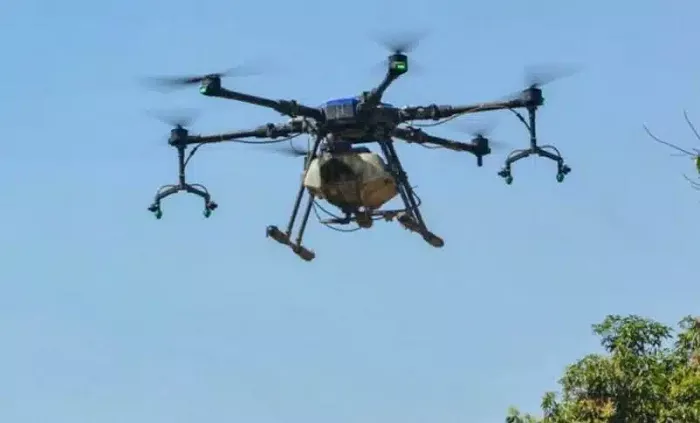KHARTOUM, April 15, 2025 – Sudan’s two-year conflict reached a critical point this month as the Rapid Support Forces (RSF) intensified its drone attacks on infrastructure and civilian targets. These strikes have exacerbated the humanitarian crisis, especially in regions recaptured by the Sudanese Armed Forces (SAF), witnesses and sources say.
The increased use of drones, particularly against army-controlled areas, marks a significant shift in the conflict. It is worsening the already dire situation for Sudanese civilians caught in the fighting.
An RSF source told Sudan Tribune that drones were being used as a “new tactic” against what they referred to as “Islamic Movement forces and allied mercenary movements.” However, a military source argued that the drone strikes followed heavy RSF losses, including the loss of control over the capital, Khartoum. These attacks aim to create insecurity and undermine the SAF’s ability to secure recaptured cities.
Targeting Infrastructure
The RSF’s drone strikes have focused on key infrastructure:
- Atbara Power Station: Last Monday, a drone hit the power station and a fuel depot in Atbara, River Nile state. This resulted in power outages across Atbara and Ad Damir.
- Merowe Dam: Sudan’s largest hydroelectric dam suffered significant damage from drone attacks last week, causing widespread power outages. The dam was attacked twice on Tuesday, though the army’s air defences reportedly repelled the strikes. Reports indicate that about 15 power stations across Sudan have been damaged or destroyed by RSF drone attacks.
- Other Locations: Eyewitnesses reported hearing explosions, consistent with anti-aircraft fire targeting drones, near Dongola (Northern State) and in Omdurman on Monday.
Experts Weigh In on the Use of Drones
Brig. Gen. Waleed Ezzeldeen, a military expert, told Sudan Tribune that both the SAF and RSF expected the conflict to end quickly, with the SAF relying on airpower and artillery. Ezzeldeen noted that drones have become a critical tool for both sides, especially after seeking advanced weaponry from international allies to counter battlefield losses.
“This marks a shift from conventional warfare to drone warfare,” Ezzeldeen said. He explained that the RSF seems to rely on drones from China and Belarus, while the SAF uses Iranian and Turkish models, including strategic and suicide drones.
The expert added that the RSF escalated drone strikes after losing ground in central Sudan, including Khartoum and Gezira states. These attacks are seen as an effort to distract the army, demoralize its troops, and create civilian panic, which may facilitate displacement and allow the RSF to advance into less defended areas.
Ezzeldeen warned that this new strategy could prolong the conflict and lead to further regional instability. He also expressed concern over reports suggesting the RSF could acquire advanced Chinese fighter jets, which he fears could escalate the violence dramatically.
Analysts Warn of Political and Military Shifts
Political analyst Dr. Mohamed Idris warned that the war is entering a “dangerous phase,” as the focus shifts from direct combat to drone strikes. He noted that the increasing use of drones raises questions about how these devices reach secure areas. Idris argued that attacks on infrastructure serve political rather than military purposes, with civilians bearing the brunt of the suffering through displacement and destruction.
Military Response and Drone Capabilities
A military source claimed that SAF air defences intercepted three drones targeting Khartoum International Airport last Monday night, assuring that the army command remains secure. This source dismissed the RSF’s drone campaign as an attempt to distract from a planned SAF offensive into Darfur, aiming to end the RSF’s presence there.
The RSF has previously targeted power and water stations and military bases in several cities, including Rabak, Shendi, El Fasher, and Khartoum.
According to sources in River Nile state, 74 drone sorties were conducted earlier this year, believed to be long-range suicide drones. The RSF also uses commercial quadcopters and portable air defence systems, while the SAF uses a variety of drones, including Iranian Mohajer-6 models and Turkish FPV drones.
Despite the RSF’s frequent drone attacks, analysts believe the SAF still holds an advantage due to its access to more advanced drone technology from allies like Iran and Turkey. The RSF continues to target the northern and eastern states, with previous threats of invasions in the River Nile and Northern states.


